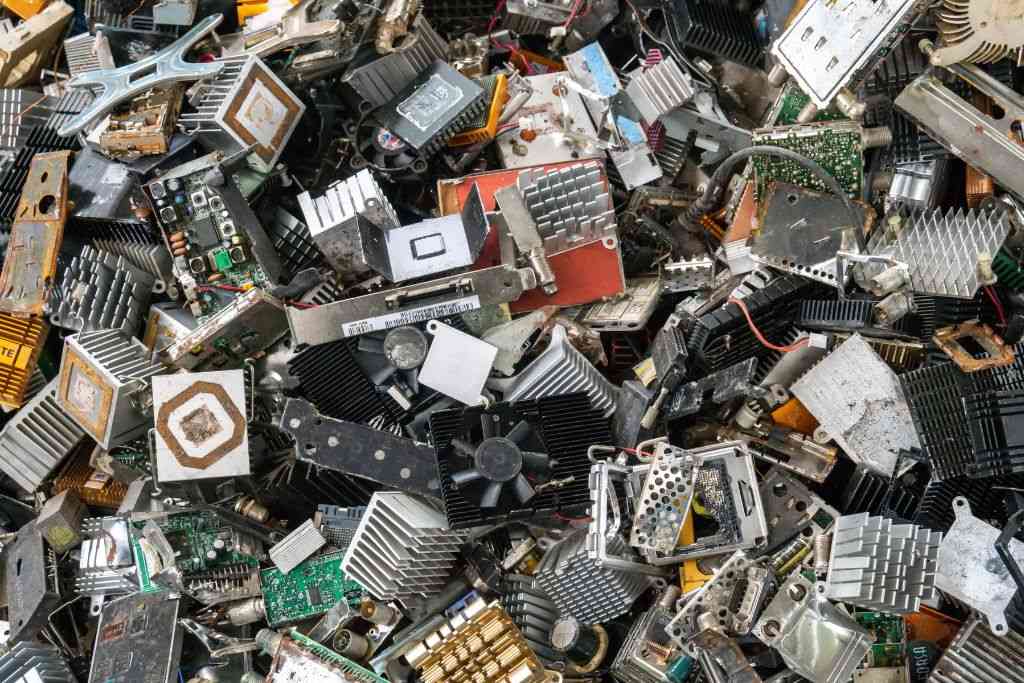
Developing countries are confronted with a complex web of waste dumping, generation and disposal leading to accelerated carbon emissions. Currently, because of lack of expertise, capacity utilisation, operational costs, obsolete equipment, liquidation, weaker unions, among others. Developing countries bear the brutal brunt of locally and internationally driven textile waste. Besides textile waste, developing countries have also to deal with other forms of waste such as, solid, e-waste and liquid waste.
A new wave of textile waste is hitting developing countries harder, at unmaintainable proportions, in the form of secondhand clothing referred to as bales. The situation is compounded with an avalanche and influx of cheaper and substandard clothing materials, footwear, plastic wares, garments and electrical goods from India and China. These clothing materials, textiles and products do not last longer, they have a very short life span and they quickly find their way into open spaces, undesignated dumping sites, waterways, among others. They continue becoming eyesore, trash and toxic garbage, with negative impacts on the environment, quality of air and human health.
Unfortunately, these poor developing countries consider the bales as a form of value addition, to alleviate clothing poverty, which experts describe as ‘waste colonialism.’ Considering that these are not new clothing materials, shipped from mainly developed countries, they quickly wear and tear, the next move is to dump them wherever. The problem would now present itself as impacting on waste disposal and management. There are also very few opportunities for sorting and recycling as developing countries are not blessed with relevant machinery and expertise.
These textile and clothing materials from as far as the far east, have destroyed the textile industries in developing countries including Zimbabwe. The country used to boast of well-resourced textile industries like David Whitehead, National Blankets, Spinners, Karina Textiles, Merlin, Cotton printers, among others. Only Waverley blankets and Kadoma Textiles are surviving and operating under stiff competition from huge influx of secondhand clothing products and cheaper-substandard imports.
The main challenge is that developing countries often end up with large amounts of obsolete clothing waste, dumped or burnt, producing smoke-filled emissions, endangering the environment and human livelihoods. The remaining ones that are not biodegradable have found their way into streams, rivers, dams, bushes, waterways blocking pipes and being consumed by livestock.
Besides the menace of textile waste, the country also should deal with other forms of solid waste that are making the country a big dumpsite. Uncollected solid waste has been quite an eyesore worldwide, especially in urban areas due to lack of regular garbage collection by municipalities and lack of laws that criminalise illegal dumpsites including throwing litter everywhere. In Zimbabwe, the 1st day of every month has been set aside for national cleaning but it is slowly fading as it did not receive necessary education and awareness it deserves. Furthermore, waste collection is risk intensive and it requires appropriate regalia, safety materials and equipment. Without these tools of trade available, waste collection remains a no-go area. For this reason, everyone involved in this community of practice requires everyone’s support, full capacitation and recognition.
The demise of Hunyani Paper Mills in this country left a gap in the waste collection and recovery trade. This is also coupled with poor service delivery from the urban municipalities and lack of privatisation of this waste collection business, leading to waste and litter hoarding in undesignated points. As a result, plastics always rear their ugly presence and they have proved problematic and menacing in managing them worldwide. Plastics have made their way into water bodies, public places and blocked essential pipes.
Developing countries also need expertise and competence to deal with dangers of e-waste from obsolete electrical gadgets, equipment and secondhand vehicles among others. These imported secondhand goods, donated as gestures of goodwill, are dumped products and potential e-waste polluters. In their countries of origin, they no longer need these goods which would have reached their life span, so they look for dumpsites or global bins like developing countries, where they are embraced. E-waste has long term effects on the health and well-being of human beings, including their environmental domains.
- It’s time to retire, are you ready?
- Village Rhapsody: Zimbabwe needs proper e-waste management system
- Village Rhapsody: Zimbabwe needs proper e-waste management system
- 'Govt dipping fingers everywhere'
Keep Reading
There is also the issue of construction waste accumulated because of rapid expansion of settlements that the country needs expertise in dealing with it. Construction waste includes disused bricks, metals, roofing materials, broken glasses, ceramics and construction clothing materials lying all over.
For these reasons textile waste literacy is required as secondhand clothing is very popular with vulnerable communities as they are extremely affordable. This should also include strict laws governing the passage of such products into the country.










